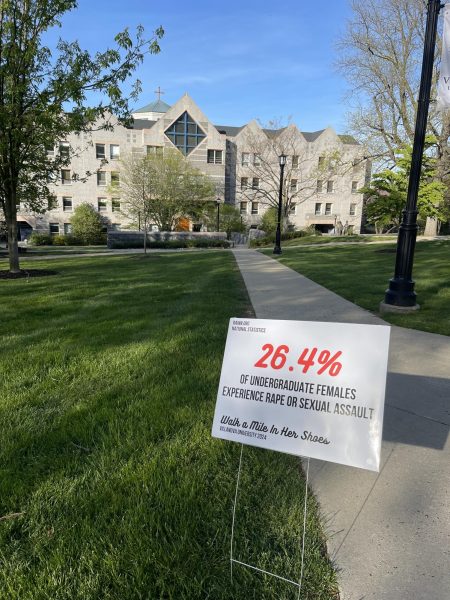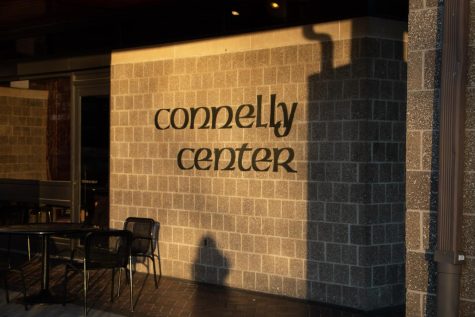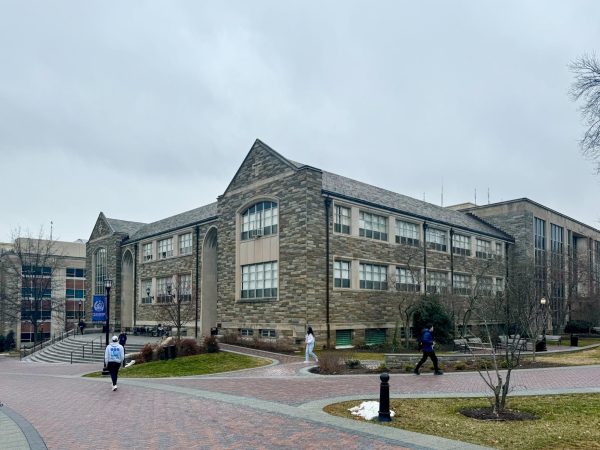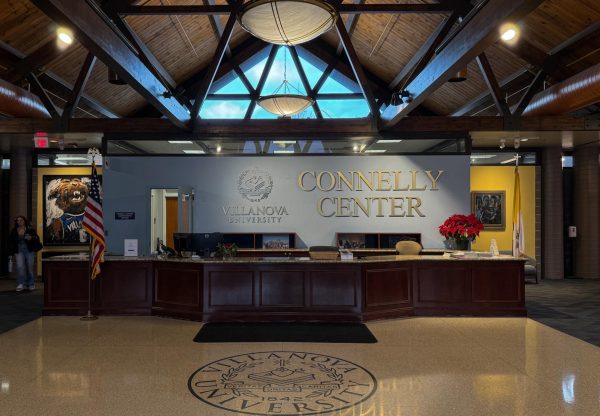La Salle Report Looks at Gender Breakdown of Higher Institutional Boards in Philadelphia
October 29, 2019
Earlier this month, The Women’s Nonprofit Leadership Initiative (WNLI) and the Nonprofit Center at La Salle University, in collaboration with La Salle University, hosted a reception to officially release the report, “The Gender Gap in Nonprofit Boardrooms: The 2019 Census of Women Board Members of the 50 Largest Medical and Educational Institutions in Greater Philadelphia” to preview the major findings and host a discussion of recommendations at The Law Offices of Montgomery McCracken, Walker and Rhoads in Philadelphia.
This is the first in-depth report and analysis of gender diversity on the boards of the region’s largest nonprofit institutions, namely universities and health systems. Villanova was one of the many schools surveyed, and the report details how the University compares to similar institutions in the area. The report serves as a joint project of La Salle University, The Nonprofit Center at La Salle University’s School of Business and The Women’s Nonprofit Leadership Initiative.
Although women are more heavily enrolled in the Philadelphia region’s educational institutions and over-represented in the workforce of its healthcare institutions, women are underrepresented in the boardrooms of those institutions, according to this in-depth analysis of gender diversity on the boards of the region’s 50 largest nonprofit medical and educational institutions.
The 50 institutions that were studied are among the largest Philadelphia area organizations and, the report states, “play an outsize role in this region,” with revenues and employees exceeding those of many for-profits whose boards have received far greater scrutiny. Women of color are particularly underrepresented, the report finds.
Of the 35 names listed by the University as current Board of Trustee members, only eight are women, accounting for 23 percent of the total composite. Mary Naylor, Board Secretary, holds one of the three Board leadership positions. Only five board members are people of color, accounting for a mere 14 percent. University bylaws additionally require that nine members of the Board must be Augustinians. The University looks to recruit members to the Board from various industries, from technology to facilities to finance, and with a plethora of knowledge in different areas of expertise.
In comparison to the student body, according to the Common Data Set from the Fall of 2018 at the University, 75 percent of students on campus identify as white, non-Hispanic. Last year’s numbers also reported women to compose 46.8 percent of the total, full-time undergraduate population, while men made up 53 percent.
“Identifying and recruiting women to serve on the Board of Trustees continues to be a priority for Villanova,” the University said in a statement. “Over the last decade, we have made strides in increasing the representation of women on the Board. Our numbers track with the higher education industry as a whole, but as a University, we know we must—and can—do better.”
According to the research, conducted in 2018 and reviewed in early 2019 by La Salle, on average women comprised only 28 percent of the healthcare boards and 33 percent of the higher education boards, with the medical institutions falling below the minimum 30 percent goal set by the Pennsylvania House of Representatives and used by a number of national organizations.
Additionally, 13 of the area’s 25 largest healthcare institutions had fewer than 30 percent of women on their boards. Of these institutions, five had fewer than 20 percent women. 14 of the area’s largest higher educational institutions had boards with fewer than 30 percent of women, and of these, eight had fewer than 20 percent women.
Only four of the 25 higher educational institutions reached or exceeded 50 percent of women on their boards, and all of these were historically women’s institutions, namely Bryn Mawr College, Immaculata University, Cabrini College and Arcadia University. Only 1 of the 25 healthcare institutions reached or exceeded parity of women on their boards. This was Doylestown Hospital, also founded by a women’s organization.
The report indicates that of the 50 medical and education institutions studied, only 11 had women board chairs (six in medical institutions and five in educational institutions). This situation arose most often when a significant number of women served on the board itself. The institutional boards averaged 13 percent people of color, the majority of whom were males.
“To anyone who believes in the power of women as leaders and the advantages that a diverse group of minds can bring to solving any problem, the data here are sobering,” said Dr. Colleen Hanycz, president of La Salle University. She called upon her “fellow presidents and CEOs, along with the regional board leaders in the health and higher educational sectors” to look at the data and ask themselves what they could do to “ensure a more representative approach to answering the big questions of the day.”
Speaking for the members of the Women’s Nonprofit Leadership Initiative, Carolyn Adams, Former Dean of the College of Liberal Arts and President of the Faculty Senate at Temple University, said, “We call on stakeholders – those who have an interest in or are affected by the decisions of these institutions – to pay attention to the make-up of these boards, and, where necessary, to use their collective power and influence to encourage change.”












